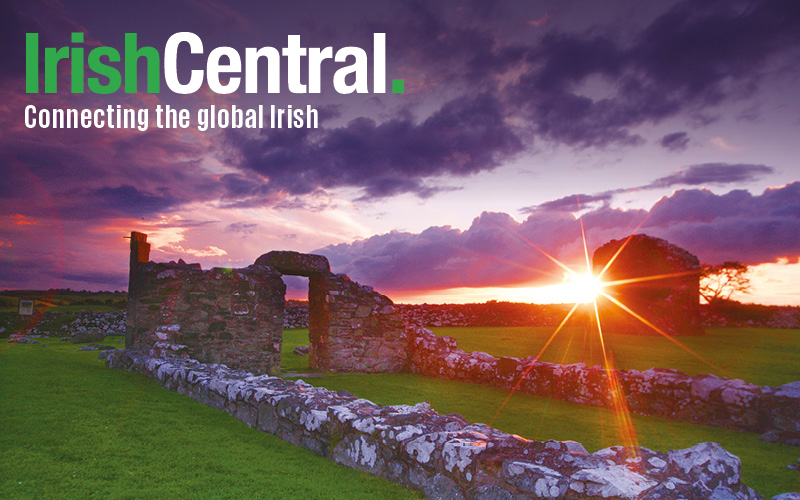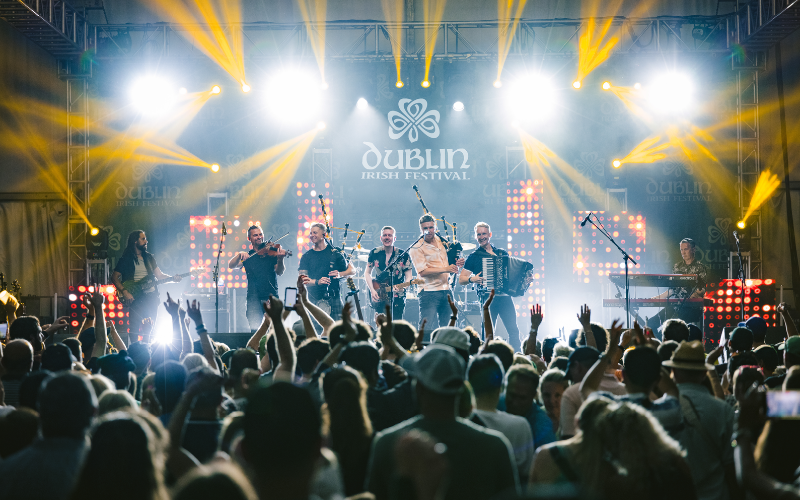A YEAR ago Taoiseach (Prime Minister) Bertie Ahern turned some sod on the Alfie Byrne Road across from the reclaimed land in Dublin Bay and near the Port Tunnel on Dublin's North Side to signal the long-anticipated beginning of Clasac, a traditional arts center. The symbolic gesture by the leader of the Irish nation at the invitation of the Clontarf branch of Comhaltas Ceoltoiri Eireann followed the most ambitious plan of cooperation between the Irish government and one of the country's leading cultural movements devoted to traditional Irish music.
The multi-million euro project anticipates a launch later this year, but it's more likely to be fully completed in the new year based on a visit I made to the site in September. The modern concert hall and performance space complete with a bar lounge facility will bring yet more welcome urban renewal to Ireland's capital city, while ensuring that the 56 year-old CCE maintains a leading role in fostering and encouraging traditional music and dance in the rapidly changing country.
It was the largest project of the development program devised by CCE in recent years to make use of government funding to the tune of *7 million as a partial commitment to the traditional arts as practiced by CCE, and one of more impressive sights that I observed on my recent visit to Ireland.
The development program funding extended to Comhaltas, much like the sizeable funding extended towards the traditional arts community at large through the Arts Council, has been effective thus far and certainly reflects an appreciation for the cultural contributions made to Irish society in the past, present and future by the Irish government.
With the creation of transparent applications and allocations that are pretty well decentralized throughout the country -- and even abroad -- the Irish people are recognizing the value of their native forms of entertainment even as the country evolves rapidly, and they can well afford to do so.
Comhaltas seems to be making good use of the grants at the midway point of their development program, according to a meeting that I attended last month at the CCE Culturlann in Monkstown, Co. Dublin. (In the interest of full disclosure, I am currently a delegate from North America to the executive committee of CCE).
Their website has been overhauled and made more accessible down to the branch level, offering free transmissions of its Comhaltas Live instructional and archival recordings.
The entire archive of over 16,000 recordings, much of them amassed by their retired music archivist Seamus MacMathuna, and 8,000 photos have all been digitized and will soon be accessible via their regional resource centers around Ireland and perhaps online.
In fact, two of those new regional resource centers, Ceolaras Coleman in Gurteen, Co. Sligo and Cois na hAbhna in Ennis, Co. Clare have undergone massive refurbishment to meet both the social, educational and archival needs of those two pillar communities in the Irish music scene.
They have the financial resources to upgrade their own facilities and to take on new ones like St. Senan's Church in Kilrush which is now a CCE outreach center in West Clare in the town made famous by Mrs. Crotty and Michael Tubridy is the first step.
Melding modern tools of communication and archival research and enhancing performance will certainly aid the mission of preserving and promoting our traditional heritage, as it was the original mission of the musicians who founded CCE in 1951 to stave off its elimination.
But people at the grass roots and levels above are very key assets as well and there are welcome initiatives here also.
In Clare for instance, I spent some time with Joe O'Connor, a native of Miltown Malbay and a retired school teacher who has been employed as a regional coordinator (Reachtaire) for CCE in the fertile areas of the west including Clare, Kerry, Limerick and Galway.
He seems an ideal choice with great appreciation for the past and vision for the future and an able grasp of the present challenges as well. In just a year he has made a great difference already in those regions, sparking a much-needed revival and hands on approach to cultural administration and encouragement.
Forty years ago Breandan Breathnach, the distinguished music collector and historian who worked for the Irish Department of Education, scathingly dismissed Comhaltas as "an organization with a great future behind it" because it had structured itself with too many non-musicians as officers whom he felt put the organization first and left musicians out of too many considerations as well as exploited them in touristy type presentations.
That criticism has stuck, and added to it is the belief that there is an over-emphasis on competitions through the fleadh system and not enough attention paid to preserving regional styles through the ranks of the young musicians who pass through it.
There is a validity to some of those claims, but it belies the involvement and development of so many fine musicians, singers and dancers who have thrived coming through the Comhaltas model and made many musical friends and contributions down through the years.
All of that makes for very healthy discussions, but you can't deny that Comhaltas has outlasted many of its major critics and continues to steadfastly adhere to its mission while adapting to the changing times, and influencing thousands of musicians along the way, including another bumper crop of very talented musicians on display at their very successful Fleadh Cheoil na hEireann in Tullamore in August attended by over 200,000 people.
Breathnach and some of the other critics underestimated the tremendous human capital that is the base of the Comhaltas movement worldwide which will always be its greatest asset in times rich and poor.
It is the cornerstone to any future development, and it reassuring to see that adequate resources are being brought to bear in continuing the movement.
Marshalling those resources and making them accessible will the challenge ahead but for CCE, the future is there to be realized.




Comments